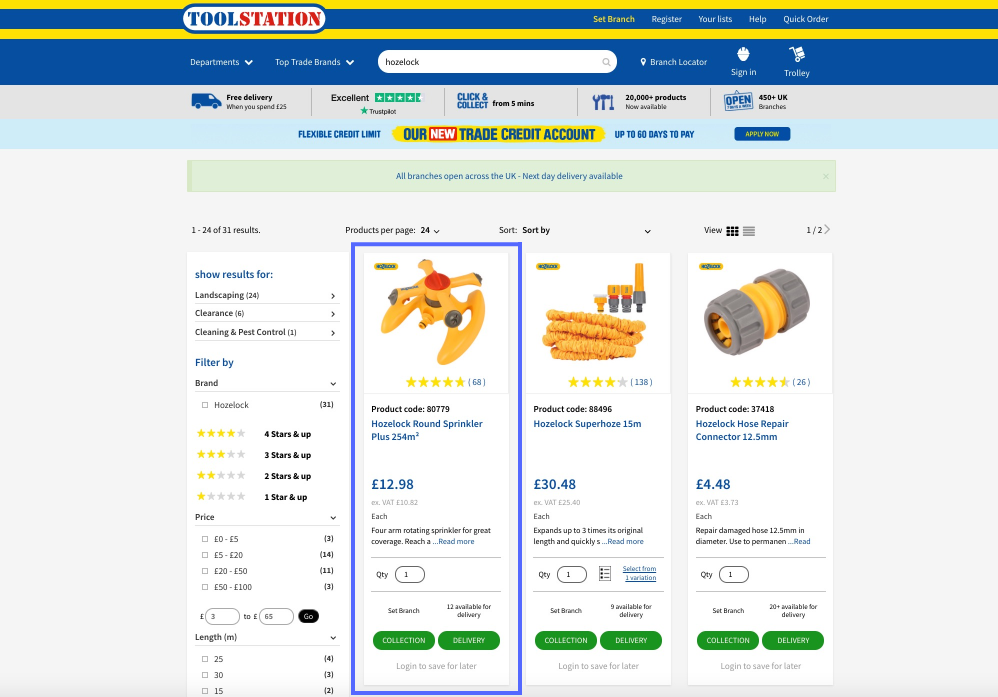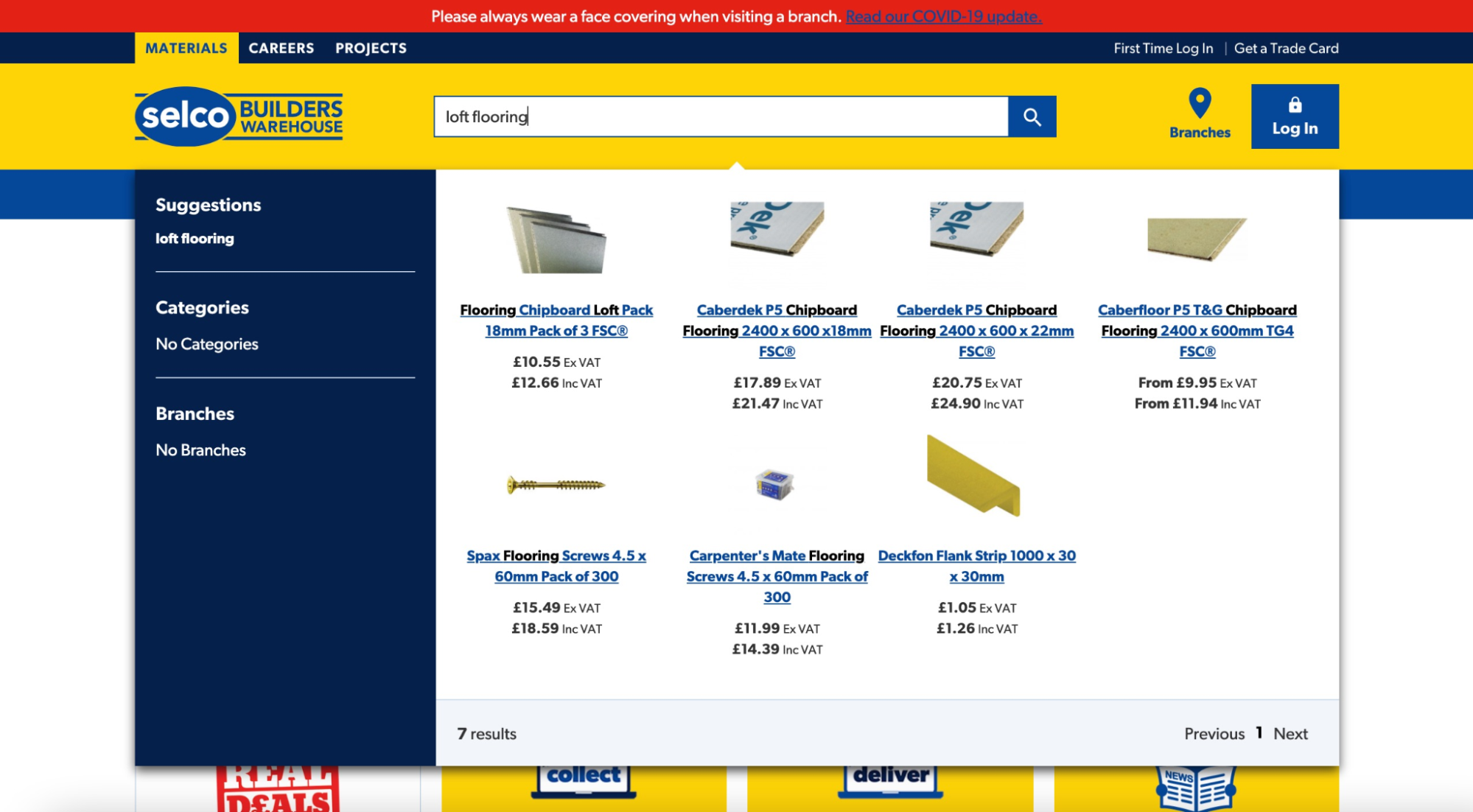

B2B commerce digital transformation: merchandising and AI optimizations
source link: https://www.algolia.com/blog/ecommerce/b2b-commerce-digital-transformation-merchandising-and-ai-optimizations/
Go to the source link to view the article. You can view the picture content, updated content and better typesetting reading experience. If the link is broken, please click the button below to view the snapshot at that time.
In our B2B digitalization journey, following Search and Navigation optimization, we will discuss Merchandising and how to optimize it with AI automation. Merchandising gives you control over your product catalog’s presentation and allows you to apply business logic to search result pages, category pages, filtering facets, or even product carousels.
Merchandising for B2B companies
B2B companies need to have full control over how to present their catalogs to the site users, choosing easily which offerings to promote and which products to highlight. To effectively utilize such functionality on a daily basis requires a business user-centered UI interface, whose goal is to enable B2B merchandising teams to work independently and autonomously from the engineering and other technical teams. Additionally, large B2B organizations with multiple sub-divisions need to have the ability to roll out the merchandising guidelines at the sub-level. Each local subdivision should be able to set up their own sets of rules and business strategies independently.
Merchandising strategy is an essential tool in ecommerce and shouldn’t be reserved for B2C retailers. B2B companies need to be able to benefit from B2C’s best online merchandising practices and gain the ability to quickly promote any product or category based on the internal sales and marketing strategies.
Optimize merchandising with AI Automation
Automation is another aspect that can enhance the merchandising efforts and maximize their efficiency, especially when dealing with extremely large catalogs. This includes offering users an ML generated product recommendations, re-ranking of search results dynamically to ensure most popular products appear at the top, or suggesting AI-generated synonyms based on user searches.
By applying AI and machine learning tools, we can free up time for the organization’s human talent to focus on custom aspects of the ecommerce process and website management, and at the same time supplement the data available to the employees and support their business decision-making process with AI-generated analytical insights. AI and ML tools are capable of analyzing huge sets of data at scale, and recommending and highlighting strategic opportunities, such as identifying potential pockets of growth or surfacing “lost” opportunities that should be mitigated.
Merchandising
Search merchandising
Search Merchandising ensures that all the necessary business logic is incorporated in the search results that will be presented to the user.
Category merchandising
Category Merchandising workflow enables companies to apply business logic to the category pages. This way, every time a shopper is browsing the website and different product categories (or landing on a category page from an external source, such as Google), the results will appear in a specific order that can be easily adjusted and optimized for conversion according to the current promotional business needs.
- Pin and hide items
- Boost, bury, and filter categories
- Set priority on category ordering
- Ban categories of items
- Merchandise on filter selection
- Merchandise based on date range, for time-limited promotions
- Merchandise based on geolocation, device, user segment
- Configurable preview UI
- Set up conditionless Rules (rules triggered all the time), for example:
- Returning custom data, such as a banner (for example, displaying a banner on a category page)
- Adding default search parameters (for example, setting up a radius search parameter for all queries, to 1,000 meters)
- Hiding items (for example, hiding records from users based on what they’re searching for)
- Set up context-only Rules (rules triggered by ‘ruleContext’, which doesn’t require a query)
- Merchandise on filter selection, where filters can be conditions or triggers, but they can also be merchandised
- Facet Merchandising (facet type and value reordering – functionality can be applied to both search and category pages)
Examples of Algolia B2B eCommerce customers successfully implementing Merchandising strategies:
Search merchandising and promoting items with relevance rules: Tool Station

When users search for “hozelock” on B2B retailer Tool Station’s website, selected products are pinned to the top of the search results for more effective merchandising.
Search merchandising – redirecting to a dedicated landing page with relevance rules: King Arthur Flour

On B2B retailer King Arthur Baking website, when users enter a query “allergy” they are redirected to a dedicated page on the website, specifically tailored to their query.
AI optimizations
AI re-ranking
Dynamic re-ranking leverages AI to find trends in your users’ behavior. Based on the query and the position of the result they click or convert, it can make improvements to your relevance by boosting results that are rising in popularity.
AI Synonyms suggestions
Using AI, Algolia identifies queries that your users often change (re-write), and proposes synonyms for the terms. With Dynamic Synonyms Suggestions, All you have to do is accept or decline the suggested synonym. You can also tweak the suggestion before accepting it, if you think there’s a better alternative. These synonyms give great indications of what users search for on the website and how they word their queries, which can be useful for SEO, data improvements, product catalog enhancements, and more.
AI-powered recommendations
Leverage ML to filter, merchandise, rank, and contextualize recommendations to fit your brand and unique business goals.
- Frequently Bought Together – Drive cross-selling, increase average order value
- Related Products – Maximize conversions and catalog exposure
Examples of Algolia B2B eCommerce customers successfully implementing AI optimizations:
Dynamic Synonyms suggestions: Tool Station, Selco

On Tool Station’s website, users can get relevant results even when using different words while entering their query (e.g. “cement” or “concrete”), thanks to Algolia’s AI generated synonyms suggestions.

On Selco’s website, users can get relevant results even when using different words while entering their query (e.g. “loft flooring” or “chipboard flooring”), thanks to the Algolia’s AI generated synonyms suggestions.
The examples above showcase various efficient ways to configure and execute robust merchandising strategies, from setting up seasonal promotional campaigns, to utilizing AI and ML tools to drive sales and revenue by automating the optimal relevance of the search and browse results displayed to B2B ecommerce site shoppers.
Recommend
About Joyk
Aggregate valuable and interesting links.
Joyk means Joy of geeK

